
Buds –
Ever since I was a boy I’ve gotten an itch to start looking at buds at this time of year and I’ve learned a lot from them. They can tell you a lot about the plant they grow on; just counting the bud scales, for instance, will help identify a tree or shrub even in the dead of winter. Bud scales are modified leaves that cover and protect the bud through winter. Some buds can have several, some have two, some have just one scale called a cap, and some buds are naked, with none at all. Buds with just two (sometimes three) scales are called valvate. The scales meet but do not overlap. This Cornelian cherry bud is a great example of a valvate bud. In the spring when the plant begins to take up water through its roots the buds swell and the scales part to let the bud grow. Some bud scales are hairy and some are covered with sticky resin that further protects the bud. Cornelian cherry (Cornus mas) is an ornamental flowering shrub related to dogwoods. It blooms in early spring (in March) with clusters of blossoms that have small, bright yellow bracts.
Buds that have several scales like the gray birch bud seen here are called imbricate buds, with scales that overlap like shingles. A gummy resin fills the spaces between the scales and makes the bud waterproof, and it can be seen on this bud. This is especially important in cold climates because water freezing inside the bud scales would destroy the bud.
Gray birch fruit appears as 2 inch long cylindrical clusters of winged nutlets growing at the branch tips. Birds eat them all winter long, and when all the nutlets are gone the stick like core is all that remains. One of those can be seen in the upper left. Ruffed grouse will eat both the buds and catkins and pine siskins and black-capped chickadees eat the seeds of gray birch. Yellow-bellied sapsuckers feed on the sap and I’ve seen beavers take an entire clump of gray birch overnight, so they must be really tasty. Deer also browse on the twigs in winter.
Native nannyberry buds (Viburnum lentago) with their two scales are another example of valvate buds. These buds always remind me of great blue herons or cranes. Nannyberry is one of our native viburnums but unlike many of them this shrub produces edible fruit.
Native Americans ate nannyberry fruit fresh or dried and used the bark and leaves medicinally. They also used the berries in jam with wild grapes. According to the book The Origins of English Words nanny berry is also called sheep berry and that name comes from its fruit, which is said to resemble sheep droppings. The nanny part of the name comes from the nanny goat. Squirrels and birds are said to eat the fruit but I see huge numbers of them still on the bushes well into winter.
Maple leaf viburnum (Viburnum acerifolium) buds are ovoid with a short stalk and have 4 overlapping dark purple scales, so they are imbricate. This is one of our prettiest native viburnums, from its white flowers in may to its incredibly colored leaves in fall. Its leaves can be pink, purple, yellow, orange or even white and sometimes a combination of 2 or 3 colors.
Maple leaved viburnum’s dark blue berry like fruits are called drupes. Botanically speaking a drupe is a fleshy fruit which contains a single seed with a hard outer shell, like a peach or a cherry. Birds and small animals gobble them up so it isn’t often you see them in spring. The Native American Chippewa tribe used the inner bark of this plant to relieve stomach pains.
Red oak (Quercus rubra) buds usually appear in a cluster and are conical and reddish brown. I like the chevron like pattern that the imbricate bud scales make. Red oak is one of our most common trees in New England but in the past many thousands were lost to gypsy moth infestations. It is an important source of lumber, flooring and fire wood. The USDA says that red oaks can live to be 500 years old.
Terminal buds appear on the end or terminus of a branch and nothing illustrates that better than the sugar maple (Acer saccharum.) The large, pointed, very scaly bud is flanked by lateral buds on either side. The lateral buds are usually smaller than the terminal bud. Sugar maple twigs and buds are brown rather than red like silver or red maples. Due to a cold spring New Hampshire only produced 148,000 gallons of syrup in 2019, which was average to below average, according to producers.
Norway maple (Acer platanoides) is supposed to be a very invasive species but they’ve been used for years as landscape trees so the genie has been let out of the bottle and now there is no stopping them. The Norway maple’s terminal bud and stem are larger than the sugar maple’s, and its bud scales are fewer and colored a pleasing maroon. Sugar maples have twice as many bud scales and they are brown. Norway maple terminal buds are also rounded while those of sugar maple are sharply pointed. Norway maple is native to eastern and central Europe and western Asia, from France east to Russia, north to southern Scandinavia and southeast to northern Iran.
One of the smallest buds I know belong to hawthorns (Crataegus) and the cherry red hawthorn bud in the above photo could easily hide behind a pea. There are over 220 species of hawthorn in North America, with at least one native to every state and Canadian province. In New Hampshire we have 17 species, so the chances of my identifying this example are slim to none. Hawthorn berries are called haws and are said to have medicinal value. Native Americans mixed the dried haws and other fruits with dried venison and fat to make pemmican. The dried flowers, leaves, and haws can be used to make a tea to soothe sore throats, and hawthorn also shows promise for treating heart disease.
I could look at a calendar to see when spring begins but I prefer watching the plants in the forest, because they’re rarely wrong. The terminal buds of shagbark hickory (Carya ovata) shown in the above photo are quite large and can fool you into thinking that they are swelling because of spring sap flow but no, they’re this way all winter.
A bud I most look forward to seeing open in spring is the beech (Fagus grandifolia.) There are beautiful silvery downy edges on the new laves that only last for a day or two, so I watch beech trees closely starting in May. Botanically beech buds are described as “narrow conical, highly imbricate, and sharply pointed.” In May they are one of the most beautiful things in the forest.
I’ve never paid much attention to the buds of basswood (Tilia americana) but the way the terminal bud grows at an angle from the twig reminds me of blueberry buds. It was red and resin covered and had only two bud scales which overlapped. I’ve read that they can sometimes have just one bud scale as well. I can’t explain why this twig was so withered. Basswood is native to New England and the Midwest. Its lightweight wood is often the choice of wood carvers, much like balsa wood, and its tough inner bark was used for rope and mats by Native Americans.
This bud is from a speckled alder (Alnus incana,) and it has two bud scales so it is valvate. They and the twigs are also covered in fine velvet. Speckled alder is a bit unusual because its branches can have three kinds of buds; leaf buds, male catkins, and female catkins. Catkins are essentially long strings of flower buds growing spirally (usually) around a central stem. I love to watch alder catkins in spring for signs of them opening. When they begin to open the catkins lengthen and their reddish color becomes speckled with golden pollen. They’re quite beautiful.
Witch hazel buds (Hamamelis virginiana) are light, yellow brown and they are hairy, with no bud scales. That means they are naked buds and the hairs protect them instead of bud scales. These buds, as do most of the buds seen here, form in the fall and spend the winter resting and waiting for spring, so they have a long period when the buds must be protected.
Staghorn sumacs (Rhus typhina) also have no bud scales so their naked buds are also hairy. Another name for staghorn sumac is velvet tree, and that’s exactly what its branches feel like. Native Americans made a drink from this tree’s berries that tasted just like lemonade, and grinding the berries produces a purple colored, lemon flavored spice.
Red maple flower buds (Acer rubrum) are small and round or oval with short stalks and 4 pairs of bud scales. The bud scales are often purple and / or tomato red. They have a fine fringe of pale hairs on their margins. Red maples can be tapped and syrup made from their sap but the sap gatherers have to watch the trees carefully, because the sap can become bitter when the tree flowers. Seeing the hillsides awash in a red haze from hundreds of thousands of red maple flowers is a treat that I always look forward to. Unfortunately I’ve found that it’s almost impossible to capture that beauty with a camera.
I’ve spent many winters watching the buds of trees and bushes, especially those right around my house like the lilac (Syringa vulgaris) in the above photo. I check it regularly starting in February for signs of swelling. In winter buds are my connection to spring and I love watching the bud scales finally open to reveal tiny leaves or flowers. The lilac bud above is a good example of an imbricate bud.
For those who can’t see or don’t want to look at small buds like lilacs fortunately there are big buds on plants like rhododendron. It also has imbricate buds. This one was half the length of my thumb. Buds found on known plants around the yard are a good place to start studying them, if you’d like to learn more.
If you are open to being taught by nature, go listen to the trees. ~Kenneth Meadows
Thanks for stopping in.

This information appeard first at https://nhgardensolutions.wordpress.com/2020/01/08/buds-5/







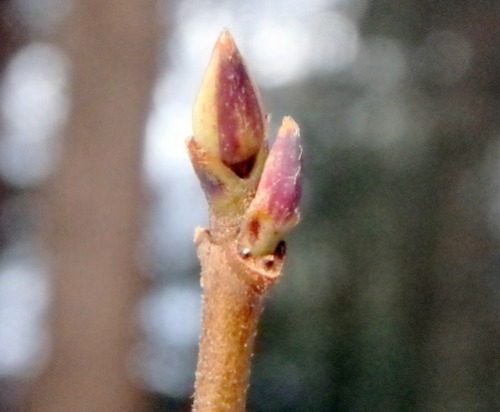
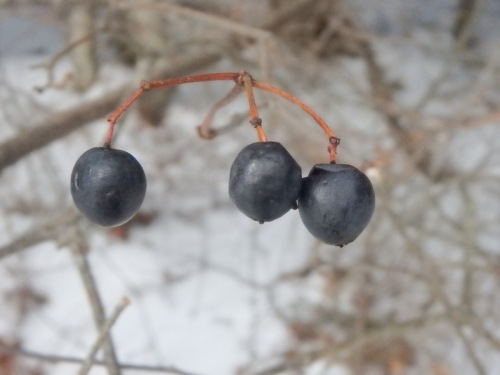



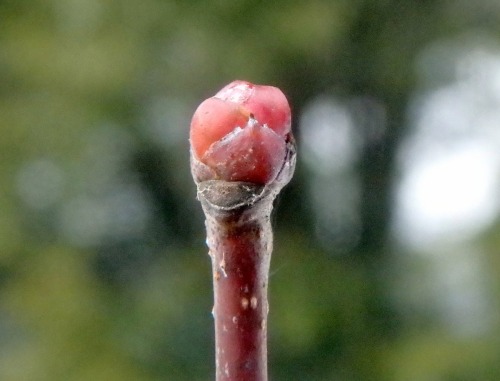
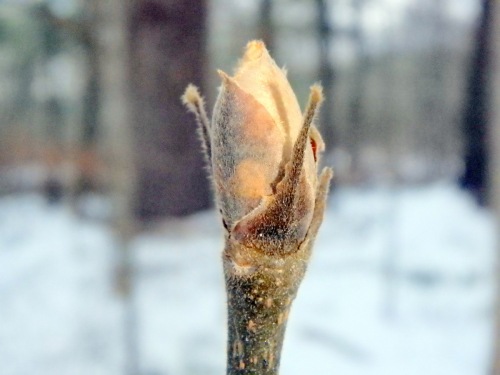
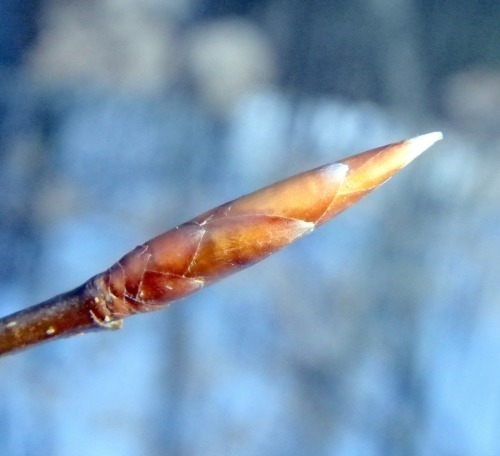




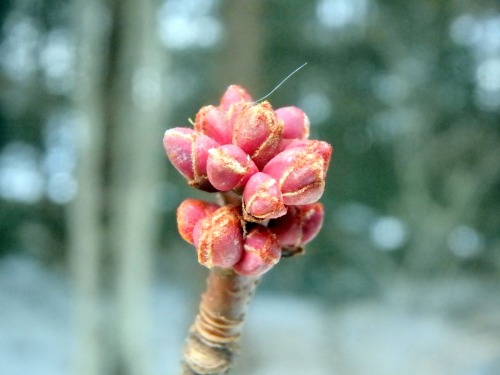





More Stories
Daily Wire August 28, 2020 at 10:45AM
Latest Articles August 28, 2020 at 10:45AM
Pamela Geller, Atlas Shrugs August 28, 2020 at 10:45AM